
Popular Diet Plans That Work – Pros & Cons
Overview
There are many popular diet plans circulating around the world. Out of the $4.2 Trillion dollar Wellness industry, $20 billion comes directly from the U.S. weight-loss industry which includes diet books, diet drugs and weight-loss surgeries. Its no surprise that the Wellness industry is so popular in todays society. However, there are good and bad diets. The following list (although not complete) lists popular diet plans that work. Compare the pros and cons to see if they may work for you.
Mediterranean Diet
It is well-known that people who live along the Mediterranean Sea live longer and suffer less from cardiovascular and cancer diseases. Primarily a plant-base diet, users consume more vegetables, nuts and other healthy foods. While consuming less red meat, sodium, refined sugar and saturated fat. The Mediterranean diet is not really a regimen diet plan. It’s a way of life. However, there are several diet books that outline the core foundation of eating the Mediterranean way.
How it Works: The diet consists of increasing your daily intake of veggies, fruits, nuts, seeds, legumes, seafood, healthy unsaturated fats like olive oil, whole grains and physical activity. You’re allowed a moderate consumption of fish, seafood, eggs, cheese, dairy and poultry at least twice a week. Red meats are limited to a few times a month. Bad foods like heart clogging saturated fats, salt, refined sugars, red meats and high-carbs are restricted.
Pros: This diet improves heart health by focusing on lowering bad fats, increasing antioxidants, vitamins, minerals and physical activity. This diet is easy following at home or while dining out because of its diverse approved foods. There are several cookbooks available to help with preparing compliant Mediterranean dishes. Also, red wine is approved on this diet.
Cons: This may not be your solution for losing weight. It’s not guaranteed that you will see a dramatic weight-loss. Also, because this is not a structured diet, there are not specific instructions, measurements or quantities on the amount of foods that should be eaten. Fresh vegetables, fish and seafood along with good olive oils can be costly. So, this diet may not be budget friendly for some. Caution should always be considered when adding wine or other alcohols to their diet.
DASH Diet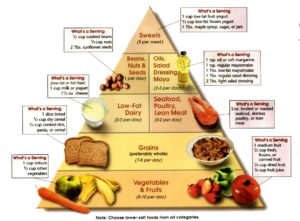
The Dietary Approaches to Stop Hypertension (DASH) Diet was created to help patients control blood cholesterol and lower high blood pressure by National Institutes of Health.
How It Works: The DASH Diet focuses on whole grains, vegetables, fruits, low-dairy, low sodium and lean proteins. The plan eliminates high fat, high sugar, high sodium and junk foods as commonly prescribed by cardiologist and health professionals.
Pros: The DASH diet offers many health benefits including lowering risk of hypertension, blood pressure, stroke and blood cholesterol levels. This diet encourages whole grains, low-fat dairy, fruits, vegetables and a diet high in calcium, potassium and fiber.
Cons: This diet restricts junk foods and may be difficult for some following. Weight-loss is not promised. However, with a lifestyle changes some may see a different in their waist circumference.
Flexitarian Diet
Developed by Registered Dietitian Dawn Jackson Blatner to help users benefit from a vegetarian lifestyle while still enjoying some animal products. The Flexitarian Diets combines vegetarian lifestyles with the flexibility of occasionally eating animal protein. Basically, followers live a mostly vegetarian diet “most of the time”. It’s not about what you can’t eat. It’s about replacing animal protein with no-meat protein alternatives.
How It Works: This is more of a lifestyle than a diet plan. There is no set diet plan, counting calories or macronutrients to figure out. The plan is based on how much meat you want to eat. The Beginner level will have 2 meatless days per week (26oz of meat or poultry/wk). Advanced level will have 3-4 meatless days per week (18oz/wk). The Expert level consumes 5 meatless days per week (9oz/wk). Followers simply focus on natural foods like fruits, vegetables, whole grains and legumes. Incorporate plant-based proteins (i.e., tofu, legumes beans, nuts & seeds) instead of animal meat. Limit refined sugars, processed foods and sweets.
Pros: This diet is ideal for people who want to eat healthier. This diet is heart healthy because it encourages a high fiber and plant diet while lowering sodium, consumption of saturated fats and cholesterol. This is also a budget friendly diet.
Cons: This diet may be too flexible for some users who need a set structure and plan.
MIND Diet
Developed in 2015 by Martha Clare Morris, a nutritional epidemiologist. The Mediterranean-DASH Intervention for Neurodegenerative Delay (MIND) combines two proven diets, Mediterranean and DASH diets.
How It Works: This plan focuses on foods from each plan that targets brain health. MIND diet may lower your risk to mental decline. It is believed that consuming from the approved food list may slow the risk of developing progressive brain disorders like Alzheimers to about 35% – 53%. Approved foods: nuts, berries, green leafy greens, vegetables, olive oil, whole grains, fish, beans, poultry and wine. Avoid foods list: Butter and margarine, cheese, red meat, fried foods, pastries and sweets.
Pros: You get the best of two proven diets. This plan may increase brain functionality and prevent cognitive decline.
Cons: There is no set plan, guidelines or recipes to adhere too. Simply eat the 10+ foods that are approved and avoid the five foods that are not.
Intermittent Fasting

For thousands of years, the ancient practice of fasting extends across many cultures and religions around the world.
How it Works: One of the most popular styles of fasting, Intermittent fasting Is an umbrella term that includes a variety of diet plans (5:2 diet, 16:8 diet, etc.) which consists of eating and fasting cycles either whole-day fasting, alternative-day fasting or time-restricting. A popular diet trend that is currently under preliminary research and evaluation to determine if weight loss is equivalent to other long-term calorie restriction plans.
Pros: Intermittent fasting is very flexible, easy following and sustainable way to improve overall health. It helps to cut down on the cost of food and preparation each week. Studies show that fasting increases weight loss by boosting metabolism. Improves blood sugar control and decreases diabetes risk by reducing insulin levels by 31% and lower blood sugar by 3-6%.
Cons: restricting eating windows may cause some to overeat, gain weight, create digestive issues. Hunger or “hangry”, fatigue and weakness may occur during first few days or week. It could interfere with fertility and reproduction.
Weight Watchers
Founded by Jean Nidetch in the 1963, Weight Watchers was developed from Nidetch’s weekly home meeting with friends where they discussed how to best loose weight.
How it Works: The program is based on a point system with considerations to fiber, protein, fat and carbs.
Pros: The plan encourages a healthy steady weigh loss of approximately 2lbs per week. There is no cap on the amount of fruit and vegetables. The plan provides “Safety Net Points” that can be earned and accumulated for special occasions without guilty reservations.
Cons: the overall basis of the program is a point system which can be time-consuming and challenging following. Weekly meetings are encouraged for motivation which may become time-consuming and an inconvenience for some. The plan promotes Weigh Watcher foods that can be very expensive. Meal planning is necessary in order to meet daily meal requirements like fruit and veggies.
Mayo Diet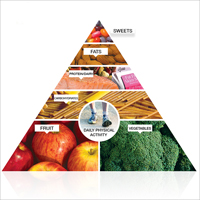
Over 100 years, the Mayo Clinic Diet has help millions improve their well-being. Developed by specialists in an array of fields like health psychology, nutrition, weight management, and preventive health. The Mayo diet is not a quick weight-loss fix program; it’s more like a lifestyle change. The diet is clinically tried and tested which puts you in charge of restructuring your life. You will be encourage limiting mindless eating and to not eat in front of the TV.
How It Works: The diet consists of two phases, Lose It and Live it. The Lose It phase is designed to jump-start your weight-loss journey in two weeks with 6-10 pounds loss. The Habit Tracker tool will target 15 key habits essential to developing weight-loss habits over a course of 14 days. This phase may be challenging as you reshape your mindset towards lifestyle habits. The second phase, Live it, helps you to continue on your journey. This phase offers tools, tips and techniques to maintain your weight loss. You will lose approximately 1-2 pounds a week by taking in 500 to 1000 calories less per day. Live It is followed until your weight-loss is obtained.
Pros: This is not a diet; it’s a lifestyle change. Split into two phases with no food off-limit in phase two. Easy program following long term.
Cons: The Lose It! phase is very restrictive. Limiting refined sugar, snacks, mindless eating, full fat dairy and dining out. Live It!, the second phase, reduces caloric intake and requires proper proportioning.
Jenny Craig
Founded in 1983 by Jenny Craig and her husband, Sidney Craig in Melbourne, Australia.
How it Works: this plan consists of three meals, two snacks and a dessert. The plan is easy and convenient following. There are no calorie-counting, weighing or measuring. There are over 100 menu items of entrees and snacks that can be purchased online, home delivery or at a local Jenny Craig center. Additionally, users receive support from consultants by phone or in-person. The consultants are not trained nutritionist. However, they help users set obtainable goals, develop meal plans, inspirations, dietary challenges and celebrate individual successes.
Pros: the plan is convenient and ideal for individuals who are busy. It cuts down on the meal planning and food preparations. Foods are proportioned servings, complete and well-balanced. Users attend weekly motivational support meetings.
Cons: depending on the plan, the program can be very expensive costing between $550 – $800 for food plus shipping with the addition of program fees. Weekly meetings may be inconvenient and time-consuming for some users. The prepackaged food is processed and loaded with carbs and sugar. So, they may not be the healthiest options for a sustainable wellness lifestyle. This plan may or may not be the best for allergy sufferers who suffer from food allergies including soy, dairy, peanuts, gluten or celiac disease, etc.
South Beach Diet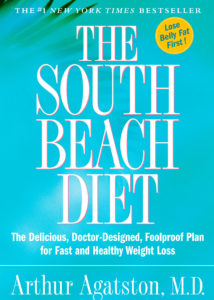
Created in 2003 by Dr Arthur Agatston and Marie Almon, the South Beach diet was initially created to help patients combat heart disease but quickly became a healthier alternative to the Atkins diet.
How it Works: the plan consists of 3 stages that focuses on lean meats, fish, low glycemic vegetables, whole grains and non-saturated fats.
Pros: there are no essential food groups that are off limit. The follower can lose approximately 13lbs in the first phase due to it’s restricted nature. The next two phases helps to educate the follower how to make better choices for long-lasting success. It’s a plan that’s better suited for those who only need to lose a few pounds.
Cons: because phase one is very restrictive, many followers fall off after the two weeks because it’s hard to stick with to.
Slim Fast Diet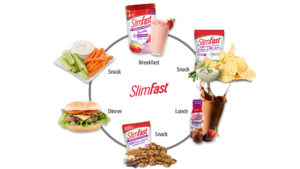
Developed in 1977 by Thompson Medical Company. Originally, the Slim Fast brand only sold shakes. Today, the brand has expanded into bars, snacks, packaged meals and other dietary supplement foods sold globally.
How it Works: The heart of the program is their 3-2-1 program which consists of 3 snacks per day; 2 SlimFast meals, shakes or bars; and, 1 balance meal containing no more than 600 calories.
Pros: the plan is simple and easy following. There are no restrictions on specific food groups. The user is encouraged to consume lean meats, vegetables and fruits. Meal menus are downloadable from website to assist with healthy meal preparations. Weight loss is steady and controlled.
Cons: Meal replacements products can be loaded with carbs and sugar. Although, meal replacements are convenient, they do not promote healthy alternative cooking and lifestyle choices. Often, weight regain is possible when meal replacements are not used.
Paleo Diet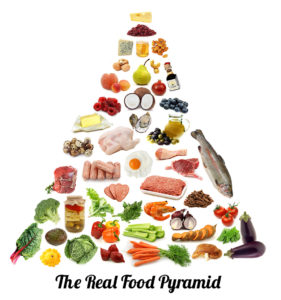
The first mentioning of a Paleolithic diet was written by gastroenterologist, Walter Voegtlin in 1975. In 1986, it was developed further by Stanley Boyd Eaton and Melvin Konner. In 2002, it was later popularized into the diet that it is today by Loren Cordain in his book, The Paleo Diet.
How it Works: the plan is based on hunter-gatherer foods also known as the Caveman diet. Natural foods that would have been grown or caught by early paleolithic humans. The plan eliminates processed meats, wheat, refined sugar, grains and dairy while promoting lean meats, fish, healthy fruits, vegetables, nuts, seeds and eggs. It’s naturally high in protein and low in carbs.
Pros: the plan is simple and easy following without calorie-restriction or budgeting. The plan allows for flexibility when the 80/20 rule is applied.
Cons: the plan eliminates certain food groups like grain and dairy that might lead to vitamin deficiencies. The plan is dependent on high levels of meat consumption which is not ideal for long-term dietary needs. Lastly, because this diet is not based on concrete research and evidence more research is required to determine the overall health benefits.
Atkins Diet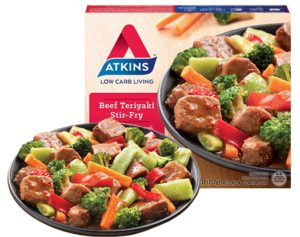
Developed in the 1960s by cardiologist Dr Robert Atkins, the Atkins plan restricts carbs while promoting fats and proteins.
How it Works: The Atkins diet is a four phase plan that heavily restricts carbs, nuts, legumes and seeds. Limits vegetables and fruits. Yet, permits red and white meat, cheese, fish, eggs, butter, margarine and cream. A very controversial plan that goes against experts’ general health advice.
Pros: there are no mandatory meetings and the plan is simple following.
Cons: if you don’t consume enough high protein and fat, the body will burn muscle instead of fat which may lower and slow-down metabolism. Followers may experience deficiencies in calcium, fiber and potassium levels due to a lack of whole grains and dairy consumption. Followers will need to consume supplements to replace deficiencies.
Keto Diet
Originally developed to combat epilepsy and seizures in children, studies found that people who suffered from Parkinson and Alzheimer’s diseases. In 2012, Dr Gianfranco Cappello led a study of 19,000 dieters who received a high fat liquid diet via a feeding tube and loss more than 20lbs. Today, several versions of Keto diet exists using real food.
How It Works: The diet focuses on weight loss via fat-burning. Followers restrict carbs (30 grams/day) and consume fats (75%) and proteins (5%). This will cause the body to go into a state of ketosis. This forces the body to burn both stored and dietary fats into ketones. This causes the body’s fat burning system to rely on fat and not sugar for energy.
Pros: Unlike most other diets, fatty foods are not restricted. This plan balances blood sugar, improves metabolism and reduces bad cholesterol.
Cons: Because this plan is very restrictive, some may find it difficult following. It’s imperative that the right fats are chosen to not defeat the purpose of the plan. Weight loss can be inconsistent.
Conclusion
The above list is just a sampling of popular diet plans that work including their positive and negative benefits. Compare the plans to find what works for you. Before you begin any diet plan, it’s important to consult with your physician or nutritionist to discover the right plan for you.
Photo credits:
Photo by Ali Inay on Unsplash Photo by amirali mirhashemian on Unsplash







Comments
My mum has always said “everything in moderation.” I think this is good advice for everyone.
However, I also believe that the more natural foods we eat like fruits, vegetables, nuts and seeds, and the less processed and manufactured stuff we consume, the healthier we will become.
Our health and weight, including the ratio of fat to muscle in our bodies, is totally up to us and determined by what we ingest and what levels of activity we engage in. I think any of the diets you have listed above will work for anyone as long as they stick to them, and participate in an exercise program that consumes more energy than what is being ingested.
Cheers
Hi Andrew,
Your mum gave you great advice. I agree that natural foods are important to leading a healthier lifestyle. As you mentioned, natural foods can be added to all the diet plans list. Its a component that kicks all diets plans into the next hemisphere. I plan on posting an article on natural foods (clean eating) soon. Please let me know if there is anything else you would like for me to post.
Thanks again,
LaTanya
Great format. I like that you easily took the time to list the pros and cons of every popular diet regimen that is hot in the health and fitness scene today.
Personally, I am thinking if I would do the keto, intermittent fasting, Mayo or Mediterranean.
Keto is something I have heard once from Dr. Jordan B. Peterson and how it helped him feel better and lose weight in one of his talks from a podcast.
Intermittent fasting since I wanna restrict the quantity of food I need to consume, partly because I am a student and needs to save up money for other things. But as they say, you shouldn’t let the food industry to fool you from thinking that you necessarily need 5 meals a day. This is evident because of the effectiveness and ability of our bodies to adjust.
I like that the mayo and Mediterranean is a way of life, I believe that in the long run, this is probably the way to go if you are going to get serious with changing your lifestyle.
Hi Rizza,
Thanks for your comment. I’m during the intermittent fasting now and will be adding keto soon. Its been really easy adjusting to the IF lifestyle. I haven’t restricted a lot of food groups. I have limited my carbs somewhat. What I learned is that I can’t eat past my eating window. That alone has helped me to cut out a lot of mindless eating. I hope to add keto to kick my weightloss into overdrive. However, you need to follow the plan that’s best for your body and lifestyle. What important is to just get started even if its something small like omitting sugary sodas or something else. Once you conquer one thing, you’ll feel good about doing more.
Please let me know if there is anything else you would like for me to post.
Thanks,
LaTanya
Thank you for posting this. I’m in a middle of a lifestyle change and was looking for a better diet out there. I love that you included everything without pushing on any diet. I’m currently doing a low carb, intermitten fasting, and Mediterranean diet or what I prefer to call it “lifestyle”. It’s slower when it comes to losing weight but I love that I’m healthier and that I can live by it for the rest of my life without feeling life I’m being punished. Thank you
Hi Rachel,
Congratulations on your lifestyle change. I’m doing intermittent and will be adding keto soon. I’m happy that you enjoyed the post. Please let me know if there is anything else you would like for me to post.
Thanks,
LaTanya
Hi LaTanya
Very nicely put article. These are all some of the best diet. My favorite is the DASH diet. I have a question though, what would be the best diet with regards to building muscle and to increase performance in your opinion. Thank you in advance
Hello Junaid,
Thank you for your comment. It really depends on several factors like protein intake, types of food to consume, number of calories, weight-lifting and macros. Are you losing weight to build muscles or gaining weight to build muscles? Many factors go into deciding whats best for you. However, in my opinion, a great place to start is a high protein diet and weight training. I will make sure to add a post on muscle building soon.
I hope that helps.
LaTanya
What a nice post you wrote! I really enjoyed reading it and I could not be silent about your post so I decided to leave my comment here and say Thank You! For sharing this quality post with others.
Actually this is exactly the information that I was looking for information about the popular diet plans and when I landed on your website and read this post, it answered all my questions in details.
So I’m happy that you decided to write about this topic and share it with people. It’s very useful and can definitely be used as a great source for everyone who is interested in this topic.
I will come back to your website again for sure and I’m looking forward to reading your new posts.)
Thanks!